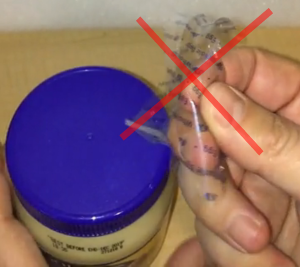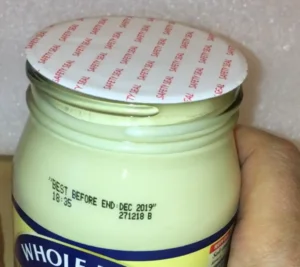Traditional glass jar seal techniques no longer cut it when it comes to the average consumer’s needs. More and more people value a product’s longevity through the provision of reliable oxygen and moisture barrier. Along with this is the necessity for tamper evidence, particularly for products such as food and pharmaceuticals. And for the benefit of everyone involved in the process of product procurement, all the way to consumption of the said product, a leak-proof approach is more than necessary.
In the past, glass jar seals were often quite unreliable. Consumers faced the dilemma of sub-par seals or foil seals that made it too difficult to get to the product itself. For the part of the manufacturer, the process of adhesion of the seals onto the glass containers was very daunting and more often than not, ended up with inadequate results. Manufacturers were forced to rely on heat shrink bands to achieve a seal that kept the product within the container but these bands were too finicky for consumers to remove. These issues have now been remedied, thanks to glass jar sealing technology.
Many consumers prefer to purchase products in glass jars. They often do so with the thought that glass is more premium packaging over plastics as the glass is viewed to preserve the “purity” of the product. They also rely on this packaging to be of more environmental benefit and can easily be separated for recycling. As such, the need to make our customers’ lives easier is a foremost demand in almost any industry.
Primitive Glass Bottle Sealing
Older technology for sealing glass jars made use of heat shrink bands and unreliable universal induction foils.
Heat shrink bands can be a fickle tool to use. On the production side of things, applying heat shrink bands onto the glass jar can be a tricky and sometimes dangerous setup. It involves high-temperature heat guns, blowers, or steam tunnels. It also deals with a lightweight film that could come either in individual pieces or in tube form. This film format necessitates consistent placement and finishes which can be arduous to have to meet each time.
For clients, heat shrink bands can bring a very unfriendly user experience. These bands are difficult to remove. And with the idea in the consumers’ minds that “glass = good for the environment,” having to remove a piece of transparent PVC plastic the very first moment they need to use the product, can be quite off-putting.
On the other hand, some manufacturers decided to use universal induction foils for glass sealing. Even at the time, these induction foils for glass had already been available for a long while. However, this technology proved to be effective mainly for dry products and powders only. Wet or oily products can initially appear to be sealed with said foils, but over time, what looked like well-sealed products ended up having a foil that lifted off the sealing rim “on its own.”
Now, in a time when consumers value good quality and trust in the products they use, having foil seals for bottles that detach themselves from the glass jar can be detrimental to sales.
Glass Liners
In recent years, there have been advances in glass jar sealing. Innovation in the field has now given manufacturers the opportunity to seal not just dried goods in glass jars, but also wet and/or oily products such as coconut oil. With our team’s solutions, we are also able to cater to this growing demand both from manufacturers and their consumers.
Benefel Pty Ltd and Adeneli Packaging
Our teams at Benefel Pty Ltd. and Adeneli Packaging can help you with your glass jar seal material. Our experts are on standby to take your calls and chats. Whatever product you may have, we have the perfect liner material for you. Product consultation is free and we are happy to develop partnerships with our customers by supplying consumable products that work well with packaging machinery.





Follow Us